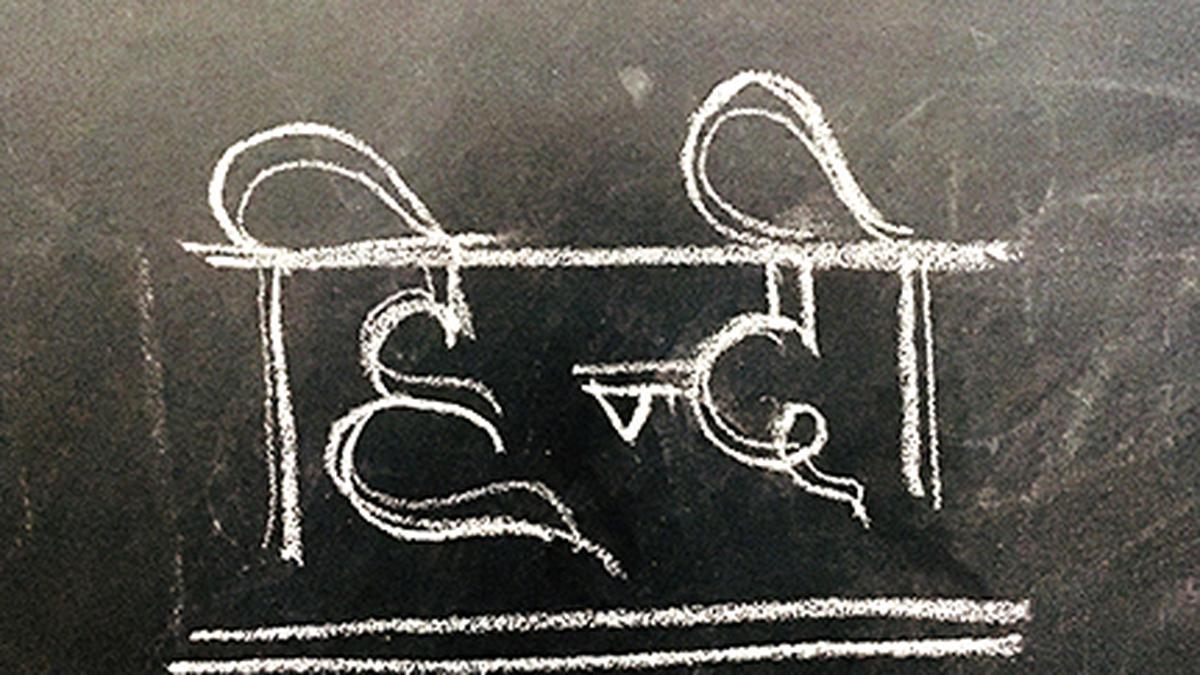Maharashtra’s decision to make Hindi a compulsory third language from Classes 1 to 5 was announced on April 17 and mandates that Hindi be taught alongside Marathi and English.
The Maharashtra government’s decision to make Hindi a compulsory third language from Classes 1 to 5 is in contravention of the National Education Policy (NEP) 2020, Laxmikant Deshmukh, the chairperson of the Maharashtra government-appointed Language Consultation Committee, told The Hindu on Monday.
Mr. Deshmukh said the panel was opposed to the State government’s move on the grounds of educational, cultural and practical implementation. He said the move is neither conducive to children’s psychological growth nor is it practical due to the woefully inadequate school infrastructure for primary education.
The committee has already written a letter to Chief Minister Devendra Fadnavis advising to revoke the decision.
Part of the NEP 2020, Maharashtra’s decision was announced on April 17 and mandates that Hindi be taught alongside Marathi and English.
However, Mr. Deshmukh said the NEP does not talk about the third language for primary education until a child turns 11. “As per the NEP, there should be only two languages – R1 [the language employed as the medium of instruction and for initial literacy attainment. Ideally, the mother tongue or regional language that is most familiar to students] and R2 [any other language, including English or a foreign language] – till the child turns 11. But the State government has claimed that the decision has been taken on the basis of recommendations of the State Council of Educational Research and Training. But their earlier draft, which was made open for public consultation and comments, did not have it,” Mr. Deshmukh contended.
Laxmikant Deshmukh, chairperson, Maharashtra government-appointed Language Consultation Committee
| Photo Credit:
Ashish
Formed after five years of consultations, NEP 2020, which replaces the previous education policy of 1986, has stated that wherever possible, the medium of instruction for students in both public and private schools until at least Class 5, but preferably till Class 8 and beyond, will be in the home language or the mother tongue or the local language or the regional language. Thereafter, the home or local language shall continue to be taught as a language wherever possible. The NEP 2020 introduces the three-language formula, encouraging students to learn — R1, R2, and R3 (a third language). While it encourages the use of the mother tongue/local language until at least Class 5 (preferably beyond), it does not limit language learning to just R1 and R2. State governments and school boards have the flexibility to choose which languages to offer, but the three-language formula remains the overarching framework.
“If you [the government] have accepted NEP, how can you bypass it?” Mr. Deshmukh said, adding that the introduction of a third language during secondary school was done on the recommendations of the Kothari Education Commission in 1968.
“I don’t know why we have suddenly made Hindi compulsory. Did the people of the State demand it? In fact, there have been protests in the State as certain groups refused to learn Marathi. In other countries, only one language is taught. We are multilingual. We learn two languages in primary years. But three languages will be burdensome for such small children,” he said.
“When the State government issued an order to declare Hindi as a compulsory third language, we were shocked. Why were we not consulted?” he said.
‘We don’t oppose Hindi’
“Look at Tamil Nadu. In the last three years, they have spent the most on education. Much more than what Maharashtra has spent… Tamil Nadu has said no to Hindi. They have only two languages there. But they are ahead in everything. We don’t oppose Hindi. We are learning it. But the decision to make Hindi mandatory as the third language is not scientific,” Mr. Deshmukh said.
Maharashtra Language Consultation Committee consists of 27 members and officers from the government departments.
He said there were several reasons for opposing the move. “In the age group of 6-11, if you look at the children’s listening capacity, it is not conducive to learning a third language. We lack meritorious teachers, good infrastructure. The Annual Status of Education Report states that even in Class 8, 30% students cannot read lessons in their mother tongue. At least 53% cannot read English properly. We have stopped teachers’ recruitment… How will the children learn an additional language?” Mr. Deshmukh said.
The cultural reasons, he added, for the opposition to Hindi arise from the reluctance to speak Marathi. “We fought for the formation of Maharashtra on linguistic basis. And yet, those who come from ‘outside’ insult Maharashtrians, refuse to speak Marathi,” he added.
Published – April 22, 2025 01:17 am IST
